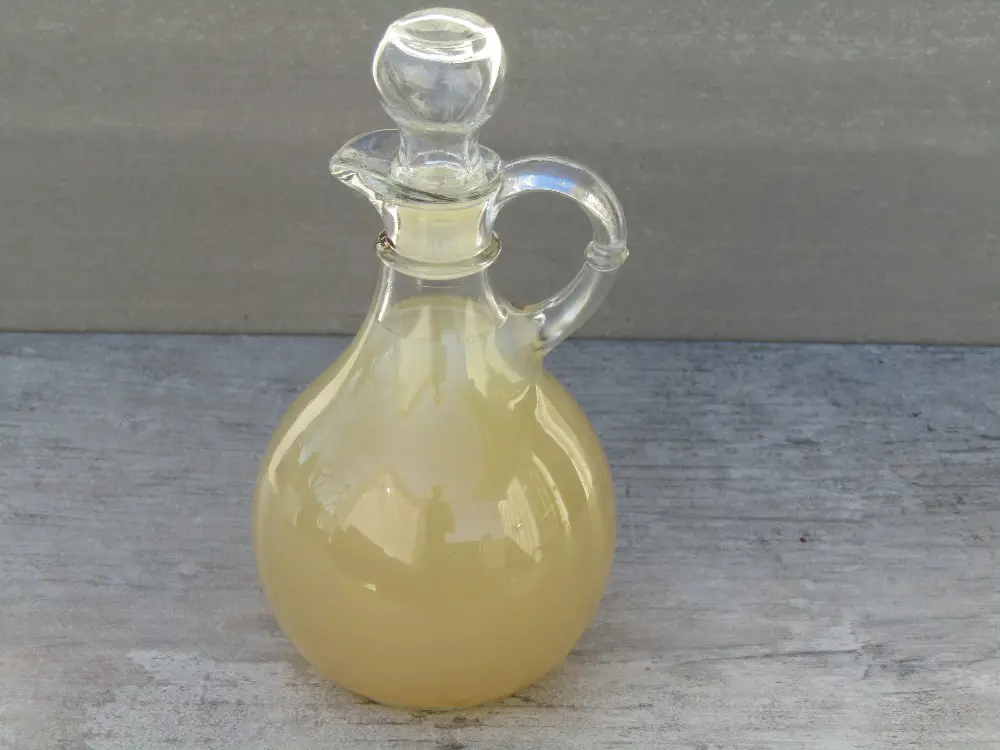This post contains affiliate links.
This is an extreme method of making vinegar. It only uses three ingredients and is similar to making any other fresh fruit vinegar. Jalapenos are the peppers used here but any other type of peppers can be used depending on the heat level you are comfortable with.
Equipment:
- One liter Glass jar
- Cloth with an elastic band
- Stirring spoon
- Kitchen knife
- Cutting board
- Gloves if using hot peppers
Ingredients:
- ½ kg (1.1 lbs) of peppers
- 2 cups white cane sugar
- Enough filtered water to fill the jar leaving an inch of headroom
Instructions:
- Chop the peppers into small pieces (you can remove the white pith for less heat)
- Pack into the jar
- Add the sugar and water
- Stir to help dissolve the sugar
- Place the cloth on the top secured with the elastic band
- Stir the mixture every 12 hours until they start to bubble
- Once active fermentation is present stir every 24 hours
- When active fermentation slows down filter the liquid off
- Place the liquid back into the jar and place the cloth
- Stir the liquid daily for another two weeks as the acetic acid bacteria grow
- Wait another two weeks before taste testing
- When the vinegar has developed a tart flavor pour off some for immediate use
- Continue to age the remaining vinegar for another 2-4 months
- Pour the remaining vinegar into sealed jars and continue to age
- Use as needed
Notes:
- It may seem extreme to only use hot peppers but the fermentation process destroys some of the capsaicin in the peppers which reduces the heat
- A vinegar mother may form on the surface of the vinegar. If you can help it do not disturb it as it helps to protect the vinegar from debris
- The white pith found in the peppers is where most of the capsaicin is found so by removing it the vinegar will be less spicy

